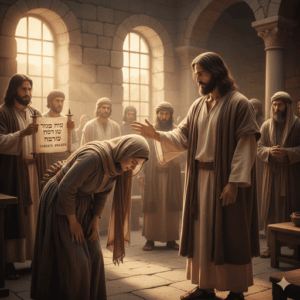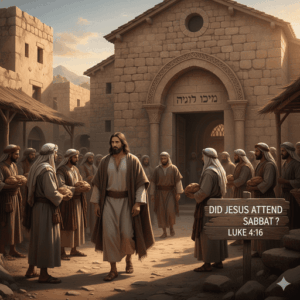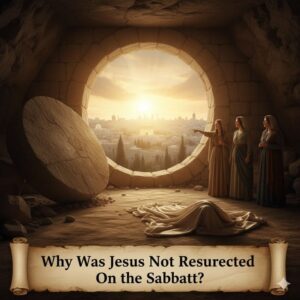How did Jesus actually observe the Sabbath? The Gospels show that Jesus honored the Sabbath by attending synagogue, teaching, and resting. (Luke 4:16)
Yet, he also challenged the Pharisees’ strict interpretations, highlighting that the Sabbath was intended as a gift for people, not a burden of rules. (Mark 2:27)
By healing and doing good on the Sabbath, Jesus taught that acts of mercy are at the heart of true Sabbath observance. (Matthew 12:12)
His actions and teachings invite us to see the Sabbath as a time for both rest and compassion, emphasizing its purpose over mere legalistic compliance. (Exodus 20:8-11)
If you’re wondering what it means to keep the Sabbath in the way Jesus did, you’ll find in his example a call to thoughtful worship, genuine community, and practical love.
Sabbath Law
Understanding Jesus’ actions on the Sabbath starts with knowing what the Sabbath was—and still is—for millions of believers.
The Sabbath is rooted in the creation story, where God rested on the seventh day, blessing and sanctifying it (Genesis 2:2-3).
For the people of God, the Sabbath became a sign of the covenant, explicitly commanded: “Remember the Sabbath day, to keep it holy” (Exodus 20:8–11).
Weekly Sabbath rest was an act of faith and obedience, a marker separating God’s people from surrounding cultures.
Over centuries, Jewish religious leaders built detailed rules to protect Sabbath holiness. Activities considered “work”—from harvesting to healing—were prohibited.
These traditions were well-intentioned but sometimes became a heavy burden. By the time of Jesus, how to properly observe the Sabbath was a central (and sometimes controversial) part of Jewish religious life.
Jesus’ Actions on the Sabbath
Jesus’ ministry is filled with powerful and provocative actions on the Sabbath. These moments were not accidental; the Gospels frequently emphasize Jesus performing miracles and teaching specifically on the Sabbath, often in public spaces like synagogues. Let’s look at some key episodes.
Healing on the Sabbath
The Man with the Withered Hand
In a synagogue, Jesus healed a man’s shriveled hand (Mark 3:1–6, Matthew 12:9–14, Luke 6:6–11). Knowing the scribes and Pharisees were watching, Jesus asked if it was lawful to do good or harm on the Sabbath. He healed the man, angering His critics.
The Crippled Woman
Jesus met a woman bent over for 18 years (Luke 13:10–17). He called her forward and healed her, prompting criticism from the synagogue leader for “working” on the Sabbath.
The Man with Dropsy
At a Pharisee’s house, Jesus healed a man suffering from dropsy (swelling) (Luke 14:1–6). He asked if it was lawful to heal on the Sabbath—none could answer.
The Lame Man at Bethesda
In John 5:1–18, Jesus healed a paralyzed man at the Pool of Bethesda. Told to pick up his mat and walk, the man was condemned by religious leaders for carrying his mat on the Sabbath.
Healing the Blind Man
In John 9, Jesus healed a man born blind, again drawing the ire of religious leaders for “working” on the Sabbath.
Plucking Grain
On another Sabbath, Jesus’ disciples plucked heads of grain as they walked through a field (Matthew 12:1–8, Mark 2:23–28, Luke 6:1–5). The Pharisees accused them of unlawful work. Jesus referenced King David eating the consecrated bread out of necessity, and argued that mercy takes precedence over ritual.
Teaching on the Sabbath
Jesus also regularly taught in synagogues on the Sabbath (Luke 4:16–30), announcing the fulfillment of prophecy and revealing the heart behind the law.
Pharisees’ Accusations and Conflicts
Why did these actions spark so much controversy? For Jesus’ critics—mainly the Pharisees and scribes—the Sabbath was non-negotiable. Healing was considered work unless it was a life-or-death emergency. Even simple acts like carrying a mat or plucking grain were seen as labor.
Jesus’ public healings and his disciples’ activities challenged the status quo. For the religious leaders, this was a threat to spiritual authority and tradition. They accused Jesus of breaking sacred law and, by extension, undermining God Himself.
But Jesus turned their accusations into teachable moments. He pointed out the inconsistency and hypocrisy of caring for animals on the Sabbath but not showing mercy to a suffering human (Matthew 12:11–12). Every time the law was used to oppress rather than liberate, Jesus pushed back.
Jesus’ Teachings about the Sabbath
In these conflicts, Jesus articulated principles that still resonate today.
“The Sabbath was made for man, not man for the Sabbath” (Mark 2:27)
Jesus reminded his audience that the Sabbath was intended as a gift and blessing, not a burden. Human need and compassion do not violate the Sabbath—they fulfill its intent.
Emphasis on Mercy and Doing Good
When criticized for healing, Jesus said, “It is lawful to do good on the Sabbath” (Matthew 12:12). Acts of compassion are always in keeping with God’s law.
Jesus, Lord of the Sabbath
Perhaps most striking, Jesus declared: “The Son of Man is Lord even of the Sabbath” (Mark 2:28). By saying this, He claimed authority not only over Sabbath observance but also over the very meaning of rest, worship, and spiritual life.
Application and Relevance Today
1. Principles of Rest and Worship
Rest is still vital in our hurried world. Sabbath calls us to faith, trust, and reliance on God’s provision. It’s a time to renew relationships—with God, family, and community.
2. Mercy Over Ritual
Jesus’ emphasis on mercy, compassion, and meeting human need should guide our response to tradition and law. Are our practices serving people, or are people serving our practices?
3. Balancing Law and Grace
Jesus doesn’t abolish God’s law but fulfills it. He invites us to live in grace, pursuing what is good and life-giving—especially on the Sabbath.
Conclusion
The stories of Jesus on the Sabbath day are more than historical accounts—they are invitations to deeper rest, bold mercy, and authentic worship.
Jesus didn’t dismiss the Sabbath; He fulfilled it and returned it to its original gift—a day for doing good, for renewal, and for celebrating God’s love.
By repeatedly healing, teaching, and challenging religious leaders on the Sabbath, Jesus showed that true obedience flows from love and compassion, not mere rule-keeping.
His claim as “Lord of the Sabbath” reveals His divine authority and points believers to the ultimate rest found in Him.
My Letter To A Sunday Keeper – Sabbath Documentary

The Days of Noah – Powerful Documentary (Video Format)

Bible Studies – Written Format







